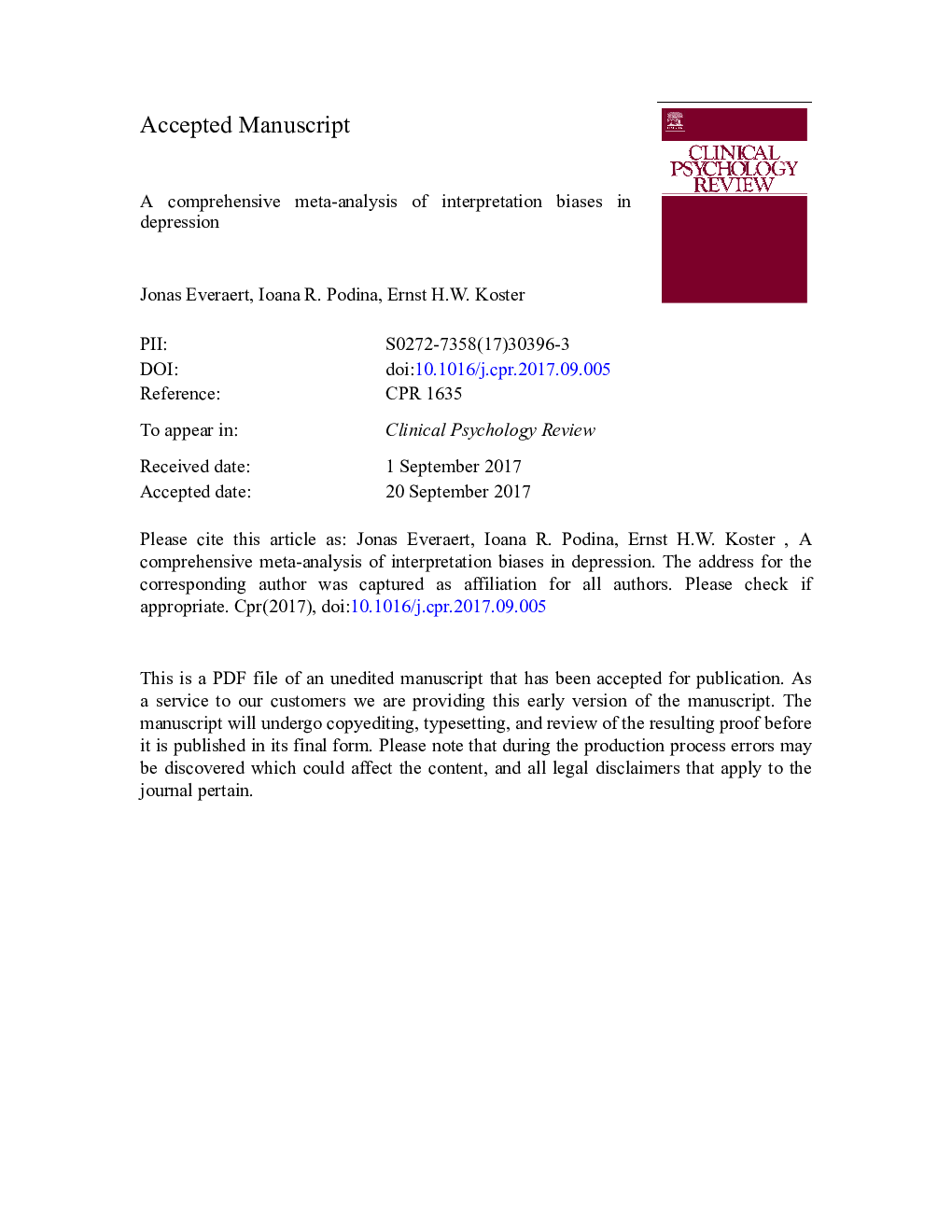| Article ID | Journal | Published Year | Pages | File Type |
|---|---|---|---|---|
| 7263603 | Clinical Psychology Review | 2017 | 62 Pages |
Abstract
Interpretation biases have long been theorized to play a central role in depression. Yet, the strength of the empirical evidence for this bias remains a topic of debate. This meta-analysis aimed to estimate the overall effect size and to identify moderators relevant to theory and methodology. PsycINFO, Embase, Web of Science, Scopus, PubMed, and dissertation databases were searched. A random-effects meta-analysis was performed on 87 studies (N = 9443). Results revealed a medium overall effect size (g = 0.72, 95%-CI:[0.62;0.82]). Equivalent effect sizes were observed for patients diagnosed with clinical depression (g = 0.60, 95%-CI:[0.37;0.75]), patients remitted from depression (g = 0.59, 95%-CI:[0.33;0.86]), and undiagnosed individuals reporting elevated depressive symptoms (g = 0.66, 95%-CI:[0.47;0.84]). The effect size was larger for self-referential stimuli (g = 0.90, 95%-CI[0.78;1.01]), but was not modified by the presence (g = 0.74, 95%-CI[0.59;0.90]) or absence (g = 0.72, 95%-CI[0.58;0.85]) of mental imagery instructions. Similar effect sizes were observed for a negative interpretation bias (g = 0.58, 95%-CI:[0.40;0.75]) and lack of a positive interpretation bias (g = 0.60, 95%-CI:[0.36;0.85]). The effect size was only significant when interpretation bias was measured directly (g = 0.88, 95%-CI[0.77;0.99]), but not when measured indirectly (g = 0.04, 95%-CI[â 0.14;0.22]). It is concluded that depression is associated with interpretation biases, but caution is necessary because methodological factors shape conclusions. Implications and recommendations for future research are outlined.
Related Topics
Health Sciences
Medicine and Dentistry
Psychiatry and Mental Health
Authors
Jonas Everaert, Ioana R. Podina, Ernst H.W. Koster,
